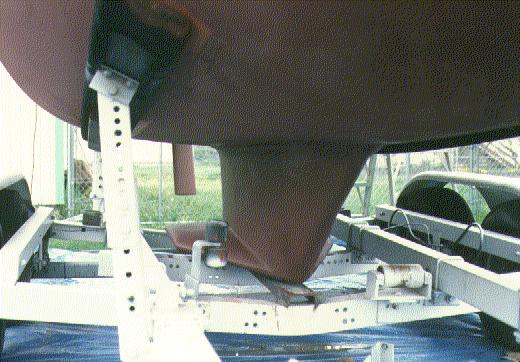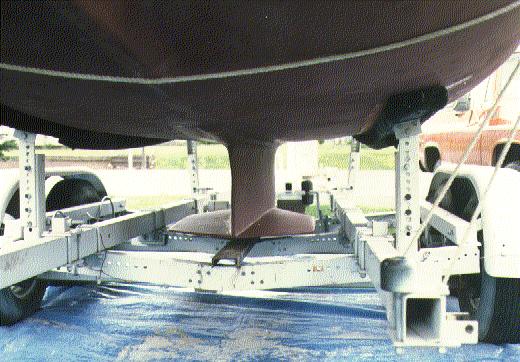
|
|
|
|
|
|
|
|
|
|
|
|
|
|
|
|
|
|
|
|
|
|
|
|
|
|
|
|
|
|
|
|
|
|
|
|
|
|
|
|
|
|
|
|
|
|
|
|

 Minnie - Wing Keel Conversion
Minnie - Wing Keel Conversion
Page 4

Mike faired the flange to hull area by firsts grinding the flange down as close to the hull as he could. There was still a lip so epoxy putty was used to build up the hull and create a smooth radius transition all around the flange. A little light sanding made the flange to hull joint look just right. Mike sealed the area with epoxy paint and then finished the job by painting the new keel and bottom with new antifouling paint.

All in all, the job went pretty well. But having the right facility and planning the job out ahead of time probably meant the difference between our success and a real disaster of lost time and reworking mistakes.
The boat is in the water now and Mike reports that she feels much more stable....She "tracks" better and doesn't heel as quickly. And, Mike feels that she is now more particular as to the balance between mainsail and foresail.
This article is the opinion of the author and not necessarily the advice of Catalina Yachts, Mainsheet or the National Association.
Send comments or questions to: Bill Holcomb